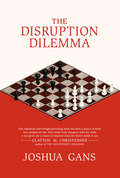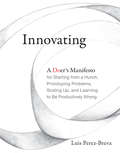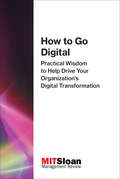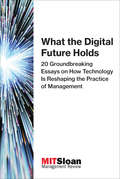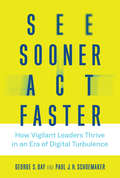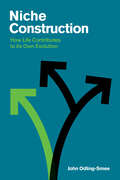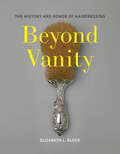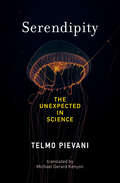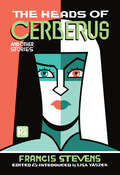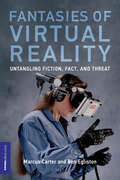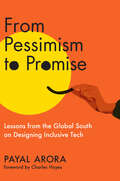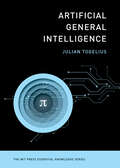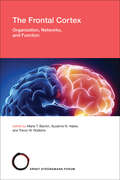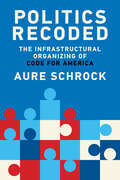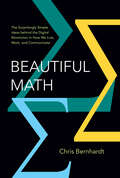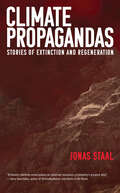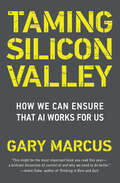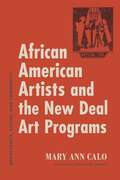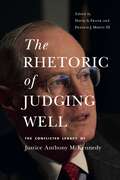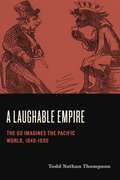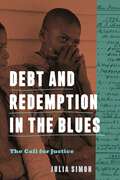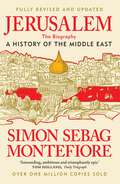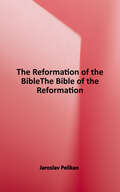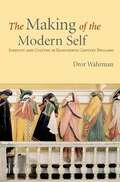- Table View
- List View
The Disruption Dilemma
by Joshua GansAn expert in management takes on the conventional wisdom about disruption, looking at companies that proved resilient and offering managers tools for survival. “Disruption” is a business buzzword that has gotten out of control. Today everything and everyone seem to be characterized as disruptive—or, if they aren't disruptive yet, it's only a matter of time before they become so. In this book, Joshua Gans cuts through the chatter to focus on disruption in its initial use as a business term, identifying new ways to understand it and suggesting new tools to manage it. Almost twenty years ago Clayton Christensen popularized the term in his book The Innovator's Dilemma, writing of disruption as a set of risks that established firms face. Since then, few have closely examined his account. Gans does so in this book. He looks at companies that have proven resilient and those that have fallen, and explains why some companies have successfully managed disruption—Fujifilm and Canon, for example—and why some like Blockbuster and Encyclopedia Britannica have not. Departing from the conventional wisdom, Gans identifies two kinds of disruption: demand-side, when successful firms focus on their main customers and underestimate market entrants with innovations that target niche demands; and supply-side, when firms focused on developing existing competencies become incapable of developing new ones. Gans describes the full range of actions business leaders can take to deal with each type of disruption, from “self-disrupting” independent internal units to tightly integrated product development. But therein lies the disruption dilemma: A firm cannot practice both independence and integration at once. Gans shows business leaders how to choose their strategy so their firms can deal with disruption while continuing to innovate.
Innovating: A Doer's Manifesto for Starting from a Hunch, Prototyping Problems, Scaling Up, and Learning to Be Productively Wrong
by Luis Perez-BrevaDiscover the MIT-developed, &“doer&’s approach&” to innovation with this guide that reveals you don&’t need an earth-shattering idea to create a standout product, service, or business—just a hunch that you can scale up to impact. Innovation is the subject of countless books and courses, but there&’s very little out there about how you actually innovate. Innovation and entrepreneurship are not one and the same, although aspiring innovators often think of them that way. They are told to get an idea and a team and to build a show-and-tell for potential investors. In Innovating, Luis Perez-Breva describes another approach—a doer&’s approach developed over a decade at MIT and internationally in workshops, classes, and companies. He shows that innovating doesn&’t require an earth-shattering idea; all it takes is a hunch. Anyone can do it. By prototyping a problem and learning by being wrong, innovating can be scaled up to make an impact. As Perez-Breva demonstrates, &“nothing is new&” at the outset of what we only later celebrate as innovation. In Innovating, the process—illustrated by unique and dynamic artwork—is shown to be empirical, experimental, nonlinear, and incremental. You give your hunch the structure of a problem. Anything can be a part. Your innovating accrues other people&’s knowledge and skills. Perez-Breva describes how to create a kit for innovating, and outlines questions that will help you think in new ways. Finally, he shows how to systematize what you&’ve learned: to advocate, communicate, scale up, manage innovating continuously, and document—&“you need a notebook to converse with yourself,&” he advises. Everyone interested in innovating also needs to read this book.
How to Go Digital: Practical Wisdom to Help Drive Your Organization's Digital Transformation (The Digital Future of Management)
by MIT Sloan Management ReviewAdvice on how companies can succeed in the new digital business environment.The most important skills a leader needs to succeed in a digital environment are not technical in nature but managerial—strategic vision, forward-looking perspective, change-oriented mindset. A company's digital transformation does not involve abandoning widget-making for app developing or pursuing “disruption” at the cost of stability. Rather, it is about adopting business processes and practices that position organizations to compete effectively in the digital environment. More important than technology implementation are strategy, talent management, organizational structure, and leadership aligned for the digital world. How to Go Digital offers advice from management experts on how to steer your company into the digital future.The book will put you on the right strategic path, with articles from MIT Sloan Management Review on developing a digital strategy, reframing growth for a digital world, monetizing data, and generating sustainable value from social media. Talent acquisition and retention are addressed, with articles on HR analytics, data translators, and enabling employees to become brand ambassadors outside of the office. Operational makeovers are discussed in terms of sales, services, new technologies, and innovation.ContributorsAllan Alter, Stephen J. Andriole, Bart Baesens, Gloria Barczak, Cynthia M. Beath, Alpheus Bingham, Didier Bonnet, Chris Brady, Joseph Byrum, Marina Candi, Manuel Cebrian, Marie-Cécile Cervellon, Simon Chadwick, Sophie De Winne, Mike Forde, Gerald C. Kane, Rahul Kapoor, David Kiron, Thomas Klueter, Mary C. Lacity, Rikard Lindgren, Pamela Lirio, Tucker J. Marion, Lars Mathiassen, Pete Maulik, Paul Michelman, Narendra Mulani, Pierre Nanterme, Doug Palmer, Alex “Sandy” Pentland, Anh Nguyen Phillips, Frank T. Piller, Iyad Rahwan, Deborah L. Roberts, Jeanne W. Ross, Ina M. Sebastian, Luc Sels, James E. Short, Fredrik Svahn, Steve Todd, Leslie P. Willcocks, H. James Wilson, Barbara H. Wixom
What the Digital Future Holds: 20 Groundbreaking Essays on How Technology Is Reshaping the Practice of Management (The Digital Future of Management)
by MIT Sloan Management ReviewThe relationship between management and digital technology: experts present a new agenda for the practice of management.Digital technology has profoundly affected the ways that businesses design and produce goods, manage internal communication, and connect with customers. But the next phase of the digital revolution raises a new set of questions about the relationship between technology and the practice of management. Managers in the digital era must consider how big data can inform hiring decisions, whether new communication technologies are empowering workers or unleashing organizational chaos, what role algorithms will play in corporate strategy, and even how to give performance feedback to a robot. This collection of short, pithy essays from MIT Sloan Management Review, written by both practitioners and academic experts, explores technology's foundational impact on management.Much of the conversation around these topics centers on the evolving relationship between humans and cognitive technologies, and the essays reflect this—considering, for example, not only how to manage a bot but how cognitive systems will enhance business decision making, how AI delivers value, and the ethics of algorithms.ContributorsAjay Agrawal, Robert D. Austin, David H. Autor, Andrew Burgert, Paul R. Daugherty, Thomas H. Davenport, R. Edward Freeman, Joshua S. Gans, Avi Goldfarb, Lynda Gratton, Reid Hoffman, Bala Iyer, Gerald C. Kane, Frieda Klotz, Rita Gunther McGrath, Paul Michelman, Andrew W. Moore, Nicola Morini-Bianzino, Tim O'Reilly, Bidhan L. Parmar, Ginni Rometty, Bernd Schmitt, Alex Tapscott, Don Tapscott, Monideepa Tarafdar, Catherine J. Turco, George Westerman, H. James Wilson, Andrew S. Winston
See Sooner, Act Faster: How Vigilant Leaders Thrive in an Era of Digital Turbulence (Management on the Cutting Edge)
by Paul J. Schoemaker George S. DayHow organizations can anticipate threats, spot opportunities, and act faster when the time is right; with rich examples including Adobe, MasterCard, and Amazon.When turbulence is the new normal, an organization's survival depends on vigilant leadership that can anticipate threats, spot opportunities, and act quickly when the time is right. In See Sooner, Act Faster, strategy experts George Day and Paul Schoemaker offer tools for thriving when digital advances intensify turbulence. Vigilant firms have greater foresight than their rivals, while vulnerable firms often miss early signals of external threats and organizational challenges. Charles Schwab, for example, was early to see and act on the promise of “robo-advisors”; Honeywell, on the other hand, stumbled when Nest Labs came out first with a “smart” thermostat. Day and Schoemaker show leaders how to assess their vigilance capabilities and cultivate insight and foresight throughout their organizations. They draw on a range of cases, including Adobe and Intuit's move to the cloud, Shell's investment in clean energy, and MasterCard's early recognition of digital challenges. Day and Schoemaker describe how to allocate the scarce resource of attention, how to detect weak signals and separate them from background noise, and how to respond strategically before competitors do. The challenge is not just to act faster but to act wisely, and the authors suggest ways to create dynamic portfolios of options. Finally, they offer an action agenda, with tips for fostering vigilance and agility throughout an organization. The rewards are stronger market positions, higher profits and growth, more motivated employees, and organization longevity.
Niche Construction: How Life Contributes to Its Own Evolution (Monographs In Population Biology Ser. #37)
by John Odling-SmeeHow niche construction theory extends evolutionary theory beyond natural selection to a more general theory about the coevolution of organisms with their environments.In Niche Construction, John Odling-Smee, the leading authority on niche construction theory, extends evolutionary theory from an explanation of how populations of organisms respond to natural selection pressures in their environments to a more general theory about the coevolution of organisms with their environments. Organisms, he shows, cause changes in their local external environments by interacting with them, thereby contributing in fundamental ways to their own and one another&’s evolution. This book applies niche construction theory to current problems such as human-induced global warming and suggests how humans might contribute positively to the future evolution of life on Earth.Odling-Smee explains how orthodox evolutionary theory falls short in two ways. First, it does not describe how organisms contribute to their own and one another&’s evolution through their environment-changing niche constructing activities. Second, it fails to explain how genetic evolution can give rise to supplementary knowledge-gaining processes in many species. These include certain developmental processes in individual organisms and socio-cultural processes in animals, including humans. Neo-Darwinism, the author writes, assesses the fitness of individual organisms in populations in terms of their capacity to survive and reproduce, but without attributing these capacities to the active, purposeful agency of organisms. He argues that the purposeful agency of individual organisms plays a central role in evolution. He also discusses the relationship of an organism&’s energy-consuming activities and the second law of thermodynamics.
Beyond Vanity: The History and Power of Hairdressing
by Elizabeth L. BlockFrom the award-winning author of Dressing Up, a riveting and diverse history of women’s hair that reestablishes the cultural power of hairdressing in nineteenth-century America.In the nineteenth century, the complex cultural meaning of hair was not only significant, but it could also impact one’s place in society. After the Civil War, hairdressing was also a growing profession and the hair industry a mainstay of local, national, and international commerce. In Beyond Vanity, Elizabeth Block expands the nascent field of hair studies by restoring women’s hair as a cultural site of meaning in the early United States. With a special focus on the places and spaces in which the hair industry operated, Block argues that the importance of hair has been overlooked due to its ephemerality as well as its misguided association with frivolity and triviality. As Block clarifies, hairdressing was anything but frivolous.Using methods of visual and material culture studies informed by concepts of cultural geography, Block identifies multiple substantive categories of place and space within which hair acted. These include the preparatory places of the bedroom, hair salon, and enslaved peoples’ quarters, as well as the presentation places of parties, fairs, stages, and workplaces. Here are also the untold stories of business owners, many of whom were women of color, and the creators of trendsetting styles like the pompadour and Gibson Girl bouffant. Block’s ground-breaking study examines how race and racism affected who participated in the presentation and business of hair, and according to which standards. The result of looking closely at the places and spaces of hair is a reconfiguration that allows a new understanding of the cultural power of hair in the period.
Serendipity: The Unexpected in Science
by Telmo PievaniFrom the bestselling author of Imperfection, a theory of uncertainty as the very core of the scientific method—and the essence of its wonder.How many times have we looked for something and found something else? A partner, a job, an object? The same thing often happens to scientists: they design an experiment and discover the unexpected, which usually turns out to be very important. This fascinating phenomenon is called serendipity, which takes its name from the mythical Serendip, a place from which, according to a Persian fable, three princes set off to explore the world, making chance discoveries along the way. In Serendipity, the award-winning author of Imperfection Telmo Pievani returns to weave a compelling story about the unexpected in science and its fascinating role in our understanding of the world.Going far beyond the usual examples of penicillin, X-rays, the microwave oven, and Christopher Columbus, Pievani shows that the most surprising stories of serendipity in the history of science reveal profound aspects of the logic of scientific discovery. In this book, he presents for the first time: an archaeology of the idea; a taxonomy of serendipitous discoveries; an &“ecology of serendipity&” (the surrounding conditions and factors that can promote it); and lastly, a theory of serendipity (why it occurs so frequently in so many sciences). From Zadig to Sherlock Holmes, Pievani shows that such great discoveries are not just the product of luck. Instead, serendipity comes from a mix of cunning, curiosity, sagacity, imagination, and accidents caught on the fly. Serendipity illuminates how much we don&’t know and how much we don&’t even know we don&’t know. Above all, Pievani reminds us that the human brain is of a piece with the world it is investigating—a world so much bigger than our knowledge—and it has also evolved within that world, adapting as it has to.
The Heads of Cerberus and Other Stories (MIT Press / Radium Age)
by Francis StevensExposed to a high-tech dust that can transport people from one dimension to another, three travelers must try to escape the totalitarian Philadelphia of 2118.When three people in Philadelphia inhale dust developed by a scientist who has discovered parallel universes, they are transported into an interdimensional no-man&’s-land that is populated by supernatural beings. From there, they go on to an alternate-future version of Philadelphia—a frightening dystopian nation-state in which citizens are numbered, not named. How will they escape? In The Heads of Cerberus and Other Stories, introduced by Lisa Yaszek, you will find this world-bending story as well as five others written by Francis Stevens, the pseudonym of Gertrude Barrows Bennett, a pioneering science fiction and fantasy adventure writer from Minneapolis who made her literary debut at the precocious age of 17.Often celebrated as &“the woman who invented dark fantasy,&” Bennett possessed incredible range; her groundbreaking stories—produced largely between 1904 and 1919—suggest that she is better understood as the mother of modern genre fiction writ large. Bennett&’s work has anticipated everything from the work of Philip K. Dick to Superman comics to The Hunger Games, making it as relevant now as it ever was.Francis Stevens (Gertrude Barrows Bennett, 1884-1948) was the first American woman to publish widely in fantasy and science fiction. Her five short stories and seven longer works of fiction, all of which appeared in pulp magazines such as Argosy, All-Story Weekly, and Weird Tales, would influence everyone from H.P Lovecraft to C.L. Moore.
Fantasies of Virtual Reality: Untangling Fiction, Fact, and Threat (Strong Ideas)
by Marcus Carter Ben EglistonThe fantasies that underpin common perceptions of Virtual Reality—and what we need to know about VR&’s potential risks as well as its opportunities.Virtual reality is the next new frontier for Silicon Valley. Mark Zuckerberg, who has overseen Meta&’s investment of billions into VR, pitches it as the next dominant computing paradigm. More than just a gaming technology, VR is top of mind for academics, tech reportage, and industry evangelists who all see the potential for VR to revolutionize fields such as education and health, as well as the way we work and communicate. But will VR achieve all this? In Fantasies of Virtual Reality, Marcus Carter and Ben Egliston strip bare the tech industry&’s vision of a future dominated by immersive VR experiences, challenging the utopian promises of this technology&’s potential.Carter and Egliston offer a critical account of VR in a variety of contexts, from gaming to human resources to policing and the military. They argue that while VR does hold significant potential, the overhyped expectations surrounding it, from achieving true empathetic understanding to transforming traditional education and office work, are often overstated and fraught with issues of privacy, control, and exclusion. What&’s more, there is nothing truly virtual about virtual reality: VR is deeply entrenched in the material world, driven by tangible technological, economic, and social logics.An accessible introduction to this emerging technology, Fantasies of Virtual Reality is essential reading for anyone interested in what VR can really do—and what is just plain fantasy.
From Pessimism to Promise: Lessons from the Global South on Designing Inclusive Tech
by Payal AroraA radical paradigm shift in the way we think about AI and tech, taking hope and inspiration from the aspirational users of new technologies around the world.When it comes to tech, the mainstream headlines are bleak: Algorithms control and oppress. AI will destroy democracy and our social fabric, and possibly even drive us to extinction. While legitimate concerns drive these fears, we need to equally account for the fact that tech affords young people something incredibly valuable—a rare space for self-actualization. In From Pessimism to Promise, award-winning author Payal Arora explains that, outside the West, where most of the world’s youth reside, there is a significant different outlook on tech: in fact, there is a contagion of optimism toward all things digital. These users, especially those in marginalized contexts, are full of hope for new tech.As AI disrupts sectors across industries, education, and beyond, who better to shine the light forward, Arora argues, than the Global South, the navigator of all manner of forced disruptions, leapfrogging obstructive systems, norms, and practices to rapidly reinvent itself? Drawing on field insights in diverse global contexts such as Brazil, India, and Bangladesh, Payal describes what drives Gen Z to embrace new technologies. From Pessimism to Promise discusses the shift to relationally-driven approaches to design; how to create “algorithms of aspiration”; how to reimagine the digital space for sex, pleasure, and care; and, what we can learn from feminist digital activists and women’s collectives in the Global South on shared digital provenance and value, as well as indigenous approaches to sustainability, that challenges sacred ideas on degrowth, circular economy, and the doughnut economy. Arora also takes heart in the power in numbers, as the users from the majority world infuse algorithms with everyday aspirations, pushing for a new digital order.Timely and urgent, From Pessimism to Promise makes a deeply compelling case that it is not naïve to be optimistic about our digital future. On the contrary, it is our moral imperative to design with hope.
Artificial General Intelligence: 5th Workshop On Computer Games, Cgw 2016, And 5th Workshop On General Intelligence In Game-playing Agents, Giga 2016, Held In Conjunction With The 25th International Conference On Artificial Intelligence, Ijcai 2016, New York, Usa, July 9-10, 2016, Revised Selected Papers (The MIT Press Essential Knowledge series #705)
by Julian TogeliusHow to make AI capable of general intelligence, and what such technology would mean for society.Artificial intelligence surrounds us. More and more of the systems and services you interact with every day are based on AI technology. Although some very recent AI systems are generalists to a degree, most AI is narrowly specific; that is, it can only do a single thing, in a single context. For example, your spellchecker can’t do mathematics, and the world's best chess-playing program can’t play Tetris. Human intelligence is different. We can solve a variety of tasks, including those we have not seen before. In Artificial General Intelligence, Julian Togelius explores technical approaches to developing more general artificial intelligence and asks what general AI would mean for human civilization.Togelius starts by giving examples of narrow AI that have superhuman performance in some way. Interestingly, there have been AI systems that are superhuman in some sense for more than half a century. He then discusses what it would mean to have general intelligence, by looking at definitions from psychology, ethology, and computer science. Next, he explores the two main families of technical approaches to developing more general artificial intelligence: foundation models through self-supervised learning, and open-ended learning in virtual environments. The final chapters of the book investigate potential artificial general intelligence beyond the strictly technical aspects. The questions discussed here investigate whether such general AI would be conscious, whether it would pose a risk to humanity, and how it might alter society.
The Frontal Cortex: Organization, Networks, and Function (Strüngmann Forum Reports #35)
by Trevor W. Robbins Marie T. Banich Suzanne N. HaberAn in-depth investigation of the structure, neuronal mechanisms, and computations of the frontal lobe that enable higher-level thought.Experts from neurobiology, neuroanatomy, evolutionary biology, cognitive neuroscience, computational neuroscience, and clinical science examine how the neuronal structure of the frontal lobes enables unique aspects of higher-level thought. Implications for understanding disrupted function in neurological and psychiatric disorders, as well as societal issues, such as volitional control of behavior and educational practice, are also considered.
Politics Recoded: The Infrastructural Organizing of Code for America (The Information Society Series)
by Aure SchrockThe first detailed history of Code for America that examines how democratically designed government systems can collectively improve technology&’s impact on society.For decades, tens of thousands of volunteers and employees of Code for America have taken a different path to institutional change: through designing and implementing infrastructure. In Politics Recoded, Aure Schrock employs a robust, organizational ethnography to analyze how Code for America&’s infrastructural organizing changed how politics get exercised, showing how we citizens can work directly with the government on projects to improve our collective livelihoods. Drawing from theories of organizing, social infrastructure, racialized organizations, technical cultures, and intersectionality, Schrock argues that our &“post-techlash society&” must no longer presume that corporate platforms or social networks can level social inequities.An underrecognized yet influential organization, Code for America emerged from a tech culture background that prioritized networks and publicity over the long, slow work of institutional change. But its evolution demonstrates how to push beyond the fundamental flaws of tech-forward organizing. This, the first history of Code for America, shows how promoting agentic citizenship and brokering in empathy let the organization influence policy at all levels of government—and demonstrates why we need to bolster institutions to ensure that everyone is justly represented and receiving the benefits. Appealing to those in political science, communication, and information studies, Politics Recoded will empower practitioners and activists to revolutionize technological design and participate in alternative forms of civic engagement.
Beautiful Math: The Surprisingly Simple Ideas behind the Digital Revolution in How We Live, Work, and Communicate
by Chris BernhardtFrom the bestselling author of Quantum Computing for Everyone, a concise, accessible, and elegant approach to mathematics that not only illustrates concepts but also conveys the surprising nature of the digital information age.Most of us know something about the grand theories of physics that transformed our views of the universe at the start of the twentieth century: quantum mechanics and general relativity. But we are much less familiar with the brilliant theories that make up the backbone of the digital revolution. In Beautiful Math, Chris Bernhardt explores the mathematics at the very heart of the information age. He asks questions such as: What is information? What advantages does digital information have over analog? How do we convert analog signals into digital ones? What is an algorithm? What is a universal computer? And how can a machine learn?The four major themes of Beautiful Math are information, communication, computation, and learning. Bernhardt typically starts with a simple mathematical model of an important concept, then reveals a deep underlying structure connecting concepts from what, at first, appear to be unrelated areas. His goal is to present the concepts using the least amount of mathematics, but nothing is oversimplified. Along the way, Bernhardt also discusses alphabets, the telegraph, and the analog revolution; information theory; redundancy and compression; errors and noise; encryption; how analog information is converted into digital information; algorithms; and, finally, neural networks. Historical anecdotes are included to give a sense of the technology at that time, its impact, and the problems that needed to be solved.Taking its readers by the hand, regardless of their math background, Beautiful Math is a fascinating journey through the mathematical ideas that undergird our everyday digital interactions.
Climate Propagandas: Stories of Extinction and Regeneration
by Jonas StaalHow climate propaganda narratives shape our (mis)understanding of the world, and how to propagate a future of repair and regeneration instead.In Climate Propagandas, Jonas Staal reveals the propaganda narratives—and the divergent realities they evoke—that shape the climate crisis in the public imaginary. It is often said that the climate crisis is a planetary one, but the devastating impact of climate crisis is distributed unequally and its related ideological positions are as vast as they are irreconcilable. A liberal might argue the crisis is the result of individual consumer behavior, whereas a libertarian sees an opportunity for geoengineering markets. A conspiracist might not believe the climate is at risk, whereas an ecofascist sees a chance to double down on the argument about who has the superior racial right to survive extinction.With an artist&’s eye and an activist&’s sense of urgency, Staal explores how these stories are told and visualized through popular film and television, internet culture, climate fiction, art, architecture, and industrial design. If life-threatening propaganda narratives have conjured our present climate catastrophe, Staal suggests, then surely stories of regeneration can propagate new planetary futures for all. His book identifies narratives that don&’t follow the path of mass extinction, but rather seek repair and regeneration of a world in crisis.
Taming Silicon Valley: How We Can Ensure That AI Works for Us
by Gary F. MarcusHow Big Tech is taking advantage of us, how AI is making it worse, and how we can create a thriving, AI-positive world.On balance, will AI help humanity or harm it? AI could revolutionize science, medicine, and technology, and deliver us a world of abundance and better health. Or it could be a disaster, leading to the downfall of democracy, or even our extinction. In Taming Silicon Valley, Gary Marcus, one of the most trusted voices in AI, explains that we still have a choice. And that the decisions we make now about AI will shape our next century. In this short but powerful manifesto, Marcus explains how Big Tech is taking advantage of us, how AI could make things much worse, and, most importantly, what we can do to safeguard our democracy, our society, and our future.Marcus explains the potential—and potential risks—of AI in the clearest possible terms and how Big Tech has effectively captured policymakers. He begins by laying out what is lacking in current AI, what the greatest risks of AI are, and how Big Tech has been playing both the public and the government, before digging into why the US government has thus far been ineffective at reining in Big Tech. He then offers real tools for readers, including eight suggestions for what a coherent AI policy should look like—from data rights to layered AI oversight to meaningful tax reform—and closes with how ordinary citizens can push for what is so desperately needed.Taming Silicon Valley is both a primer on how AI has gotten to its problematic present state and a book of activism in the tradition of Abbie Hoffman&’s Steal This Book and Thomas Paine&’s Common Sense. It is a deeply important book for our perilous historical moment that every concerned citizen must read.
African American Artists and the New Deal Art Programs: Opportunity, Access, and Community
by Mary Ann CaloThis book examines the involvement of African American artists in the New Deal art programs of the 1930s. Emphasizing broader issues informed by the uniqueness of Black experience rather than individual artists’ works, Mary Ann Calo makes the case that the revolutionary vision of these federal art projects is best understood in the context of access to opportunity, mediated by the reality of racial segregation.Focusing primarily on the Federal Art Project (FAP) of the Works Progress Administration (WPA), Calo documents African American artists’ participation in community art centers in Harlem, in St. Louis, and throughout the South. She examines the internal workings of the Harlem Artists’ Guild, the Guild’s activities during the 1930s, and its alliances with other groups, such as the Artists’ Union and the National Negro Congress. Calo also explores African American artists’ representation in the exhibitions sponsored by WPA administrators and the critical reception of their work. In doing so, she elucidates the evolving meanings of the terms race, culture, and community in the interwar era. The book concludes with an essay by Jacqueline Francis on Black artists in the early 1940s, after the end of the FAP program.Presenting essential new archival information and important insights into the experiences of Black New Deal artists, this study expands the factual record and positions the cumulative evidence within the landscape of critical race studies. It will be welcomed by art historians and American studies scholars specializing in early twentieth-century race relations.
The Rhetoric of Judging Well: The Conflicted Legacy of Justice Anthony M. Kennedy (Rhetoric and Democratic Deliberation)
by David A. Frank And Francis J. Mootz IIIKnown as the “swing justice,” Justice Anthony M. Kennedy provided the key vote determining which way the Supreme Court would decide on some of the most controversial cases in US history. Though criticized for his unpredictable rulings, Kennedy also gained a reputation for his opinion writing and, more so, for his legal rhetoric.This book examines Justice Kennedy’s legacy through the lenses of rhetoric, linguistics, and constitutional law. Essays analyze Kennedy’s opinion writing in landmark cases such as Romer v. Evans, Obergefell v. Hodges, and Planned Parenthood v. Casey. Using the Justice’s rhetoric as an entry point into his legal philosophy, this volume reveals Kennedy as a justice with contradictions and blind spots—especially on race, women’s rights, and immigration—but also as a man of empathy deeply committed to American citizenship.A sophisticated assessment of Justice Kennedy’s jurisprudence, this book provides new insight into Kennedy’s legacy on the Court and into the role that rhetoric plays in judging and in communicating judgment.In addition to the editors, the contributors to this volume are Ashutosh Bhagwat, Elizabeth C. Britt, Martin Camper, Michael Gagarin, James A. Gardner, Eugene Garver, Leslie Gielow Jacobs, Sean Patrick O’Rourke, Susan E. Provenzano, Clarke Rountree, Leticia M. Saucedo, Darien Shanske, Kathryn Stanchi, and Rebecca E. Zietlow.
Our Beloved Friend: The Life and Writings of Anne Emlen Mifflin
by Gary B. Nash Emily M. TeipeBorn into one of the wealthiest families in Philadelphia and raised and educated in that vital center of eighteenth-century American Quakerism, Anne Emlen Mifflin was a progressive force in early America. This detailed and engaging biography, which features Mifflin’s collected writings and selected correspondence, revives her legacy.Anne grew up directly across the street from the Pennsylvania statehouse, where the Continental Congress was leading the War of Independence. A Quaker minister whose busy pen, agile mind, and untiring moral energy produced an extensive corpus of writings, Anne was an ardent abolitionist and social reformer decades before the establishment of women’s anti-slavery societies. And at a time when most Americans never ventured beyond their own village, hamlet, or farm, Anne journeyed thousands of miles. She traveled to settlements of Friends on the frontier and met with Native Americans in the rough country of northwestern Pennsylvania, New York, and Canada. Our Beloved Friend provides a unique window onto the lives of Quakers during the pre-Revolutionary era, the establishment of the New Republic, and the War of 1812.
A Laughable Empire: The US Imagines the Pacific World, 1840–1890 (Humor in America)
by Todd Nathan ThompsonIn the nineteenth-century United States, jokes, comic anecdotes, and bons mots about the Pacific Islands and Pacific Islanders tried to make the faraway and unfamiliar either understandable or completely incomprehensible (i.e., “other”) to American readers. A Laughable Empire examines this substantial archival corpus, attempting to make sense of nineteenth-century American humor about Hawai‘i and the rest of the Pacific world.Todd Nathan Thompson collects and interprets these comic, sometimes racist depictions of Pacific culture in nineteenth-century American print culture. Drawing on an archive of almanac and periodical humor, sea yarns, jest books, and literary comedy, Thompson demonstrates how jokes and humor functioned sometimes in the service of and sometimes in resistance to US imperial ambitions. Thompson also includes Indigenous voices and jokes lampooning Americans and their customs to show how humor served as an important cultural contact zone between the United States and the Pacific world. He considers how nineteenth-century Americans and Pacific Islanders alike used humor to employ stereotypes or to question them, to “other” the unknown or to interrogate, laughingly, the process by which “othering” occurs and is disseminated.Incisive and detailed, A Laughable Empire documents American humor about Pacific geography, food, dress, speech, and customs. Thompson sheds new light not only on nineteenth-century America’s imperial ambitions but also on its deep anxieties.
Debt and Redemption in the Blues: The Call for Justice (American Music History)
by Julia SimonThis volume explores concepts of freedom and bondage in the blues and argues that this genre of music explicitly calls for a reckoning while expressing faith in a secular justice to come. Placing blues music within its historical context of the post-Reconstruction South, Jim Crow America, and the civil rights era, Julia Simon finds a deep symbolism in the lyrical representations of romantic and sexual betrayal. The blues calls out and indicts the tangled web of deceit and entrapment constraining the physical, socioeconomic, and political movement of African Americans. Surveying blues music from the 1920s to the early twenty-first century, Simon’s analyses focus on economic relations, such as sharecropping, house contract sales, debt peonage, criminal surety, and convict lease. She demonstrates how the music reflects this exploitative economic history and how it is shaped by commodification under racialized capitalism. As Simon assesses the lyrics, technique, and styles of a wide range of blues musicians, including Bessie Smith, Blind Lemon Jefferson, Big Bill Broonzy, Muddy Waters, B. B. King, Albert Collins, and Kirk Fletcher, she argues forcefully that the call for racial justice is at the heart of the blues.A highly sophisticated interpretation of the blues tradition steeped in musicology, social history, and critical-cultural hermeneutics, Debt and Redemption not only clarifies blues as an aesthetic tradition but, more importantly, proves that it advances a theory of social and economic development and change.
Jerusalem: The Biography – A History of the Middle East
by Simon Sebag MontefioreThoroughly updated and revised for 2024, JERUSALEM: THE BIOGRAPHY is the history of the Middle East through the lens of the Holy City and the Holy Land, from King David to the wars and chaos of today. The history of Jerusalem is the story of the world: Jerusalem is the universal city, the capital of two peoples, the shrine of three faiths. The Holy City and Holy Land are the battlefields for today's multifaceted conflicts and, for believers, the setting for Judgement Day and the Apocalypse.How did this small, remote town become the Holy City, the 'centre of the world' and now the key to peace in the Middle East? Why is the Holy Land so important not just to the region and its many new players, but to the wider world too? Drawing on new archives and a lifetime's study, Montefiore reveals this ever-changing city and turbulent region through the wars, love affairs and revelations of the kings, empresses, amirs, sultans, caliphs, presidents, autocrats, imperialists and warlords, poets, prophets, saints and rabbis, conquerors and whores who created, destroyed, chronicled, and believed in Jerusalem and the Holy Land. A classic of modern literature, this is not only the epic story of 3,000 years of faith, slaughter, fanaticism, co-existence, power and myth, but also a freshly updated, carefully balanced history of the Middle East, from King David to the new players and powers of the twenty-first century, from the birth of Judaism, Christianity and Islam to the Israel-Palestine conflict and the mayhem of today.This is how today's Middle East was forged, how the Holy Land became sacred and how Jerusalem became Jerusalem - the only city that exists twice - in heaven and on earth.
The Reformation of the Bible/The Bible of the Reformation
by Jaroslav Pelikan Valerie R. Hotchkiss David PriceIt is equally true that the Reformation was inspired and defined by the Bible and that the intellectual, political and cultural forces of the Reformation reshaped the Bible. This work explores the level of influence each had upon the other.
The Making Of The Modern Self: Identity And Culture In Eighteenth-century England
by Dror Wahrman02 Toward the end of the eighteenth century, a radical change occurred in notions of self and personal identity. This was a sudden transformation, says Dror Wahrman, and nothing short of a revolution in the understanding of selfhood and of identity categories including race, gender, and class. In this pathbreaking book, he offers a fundamentally new interpretation of this critical turning point in Western history.Wahrman demonstrates this transformation with a fascinating variety of cultural evidence from eighteenth-century England, from theater to beekeeping, fashion to philosophy, art to travel and translations of the classics. He discusses notions of self in the earlier 1700s-what he terms the ancien regime of identity-that seem bizarre, even incomprehensible, to present-day readers. He then examines how this peculiar world came to an abrupt end, and the far-reaching consequences of that change. This unrecognized cultural revolution, the author argues, set the scene for the array of new departures that signaled the onset of Western modernity.Dror Wahrman is associate professor of history at Indiana University (Bloomington).
